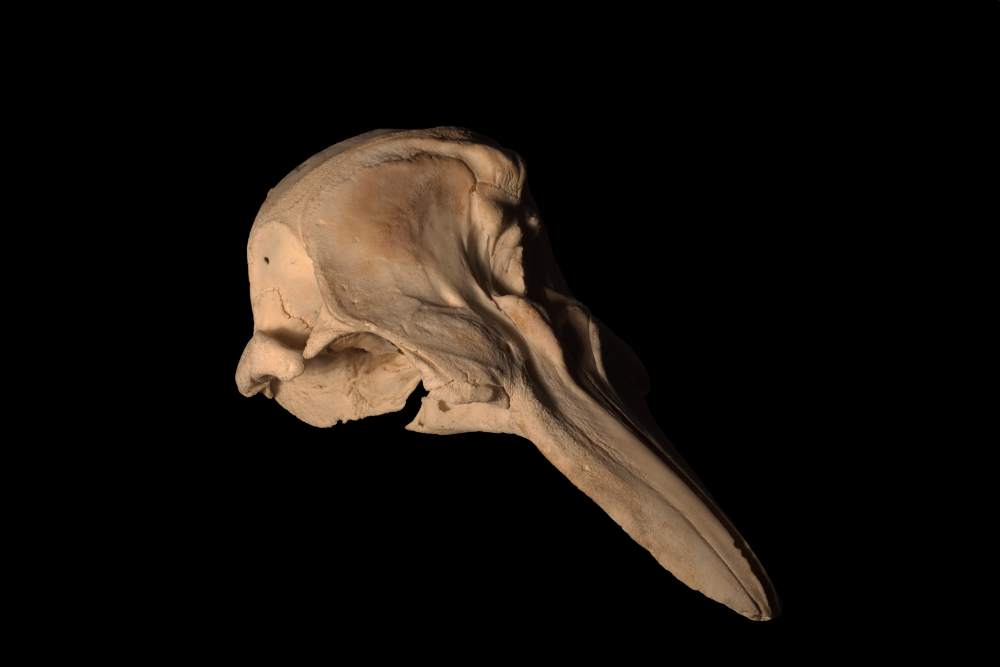Harbour porpoise

At first glance this pointed skull is reminiscent of a bird beak but it is in fact the elongated rostrum of a porpoise Phocoena phocoena, evolved from the jawbone.
The porpoise belongs to the toothed whales (although not a whale itself) the only group of aquatic mammals to use echolocation. Porpoises produce high-frequency clicks, and use their echoes to create a three-dimensional acoustic image of their surrounding environment. They use this sense to hunt for prey such as fish or squid. Harbour porpoises are the most abundant cetacean in European waters, and also the smallest. These elusive creatures are difficult to study in the wild, they are wary of human contact and do not tend to interact with boats. Nevertheless, their clicking could prove crucial to understanding their habits, with acoustic monitoring techniques increasingly used to shed light on their behaviour.
UCC Natural Collections
Contact us
